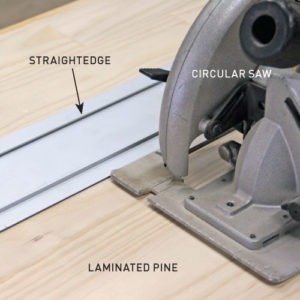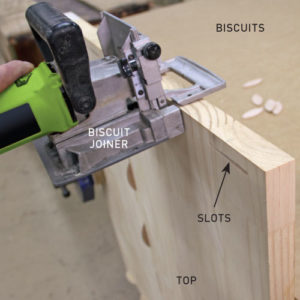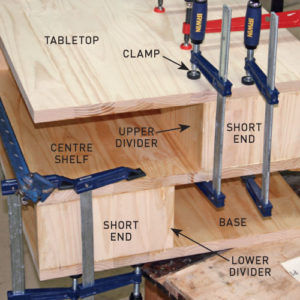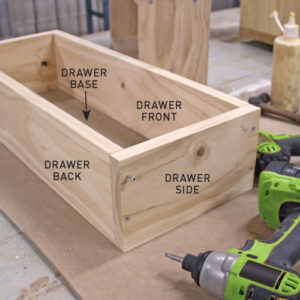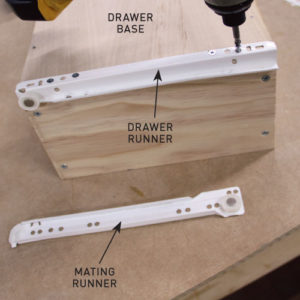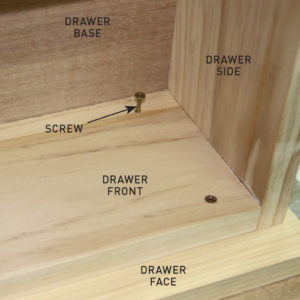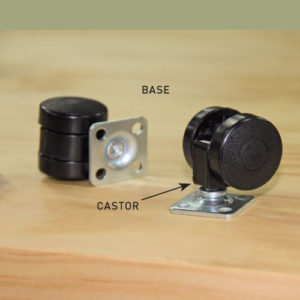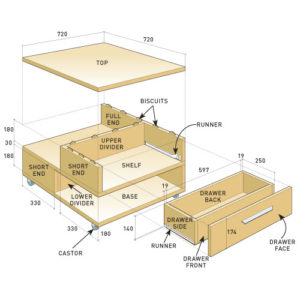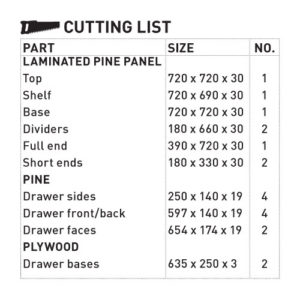Two-Drawer Coffee Table
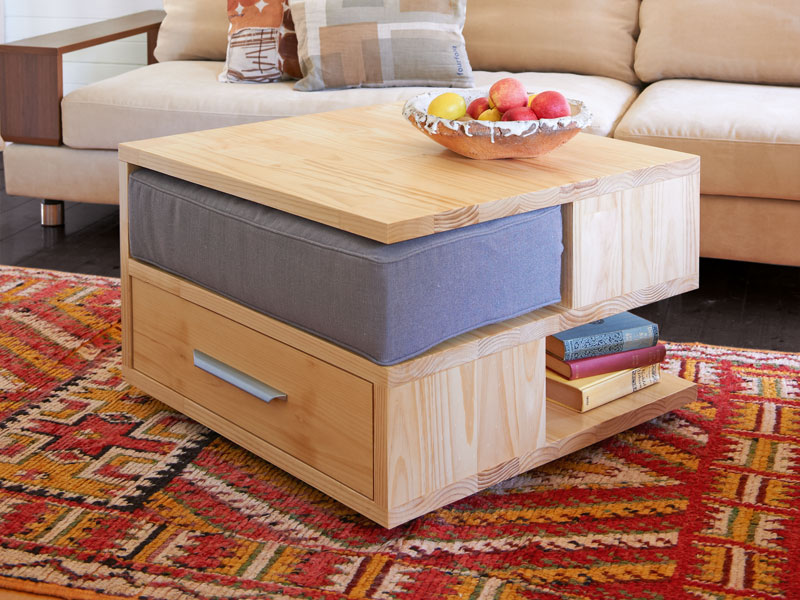
This space-saving coffee table is also a neat storage unit. It has open shelving for cushions or decorative items and two drawers to keep magazines, or to use as a place to hide the remote controls.
Adding four castors to the base makes it easy to tuck the table out of the way when space is needed.
Measuring 720mm square the table stands 450mm high and has two shelves and two drawers that are reversed on opposite sides to make the assembly balanced and strong.
The table is built from laminated pine panels with DAR pine used for the 250mm deep drawers and 3mm plywood for the drawer bases.
Biscuits are used to join the parts of the table so no fasteners are visible once the table has been built.
To finish the coffee table, apply two coats of clear polyurethane and add slimline handles to the drawer faces.
Make the drawers
The drawers are simply boxes assembled using screws with a face attached then runners secured to the sides.
Drawer runners range in length and are supplied as two parts per side. They are easy to fit to box-style drawers.
A gap of 12.5mm is needed on each side with one part secured to the drawer and the other to the table.
You can find standard 250 to 550mm long runners at hardware stores. They are available powdercoated in black, white or cream and rated for a specific weight.
Fasteners
Join the components of the table using number 20 biscuits and PVA adhesive. Attach the castors to the base of the table with 12mm x 8g timber screws.
Use 32mm x 8g timber screws to make the drawer boxes and secure the drawer bases with 25 x 1.6mm flat head nails.
Using a biscuit joiner
A biscuit joiner is like a small angle grinder with a baseplate and sliding carriage. A tungsten-tipped blade cuts a curved slot into an edge or face of material to be joined in corresponding positions and heights.
To hold the joints together, adhesive is applied to biscuits which are then inserted into the slots.
TIP Biscuits come in three different sizes, numbered 0, 10 and 20.
